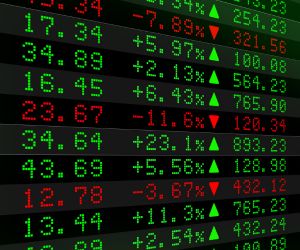Learn what market capitalization is and how it affects your perception of investments at the start of your trading journey.

Market Capitalization Categories
Have you ever wondered why companies are grouped by size in their stock market ventures? That's thanks to market capitalization. Just like in a fashion runway where clothing is showcased by similar-sized collections, in the financial world, we do something very similar with companies.
Small Captain (Micro and Small Cap)
Microcap companies, with a capitalization of less than $300 million, are like those Reddit stocks that are exciting for their potential for exponential growth... if they don't crash first, of course.
Small cap companies, between $300 million and $2 billion, are ideal for those seeking stock market adventures. They tend to be more volatile, but also, at times, more lucrative.
Middle Class (Mid Cap)
Here we talk about companies with a capitalization between $2 billion and $10 billion. Think of them as that safe yet exciting option, still with one foot on the growth rocket, but not so much that it explodes in your portfolio.
The Big Boys (Large and Mega Cap)
Finally, we have the large and mega caps, exceeding $10 billion. These are like movie giants: predictable, but with the occasional surprise. They tend to offer stability, ideal for risk-averse investors.
So, what does this mean for an investor? Determine your risk appetite and financial goals. Are you the type who seeks the thrill of the journey with microcaps, or do you prefer the security of the veterans of the big industry?
Each category has its place and time. As Bruce Lee would say: "Be water, my friend." Adapt your investment strategy to the opportunities each size offers.
Practical Examples
Let's put these capitalization categories under the financial microscope with practical examples. It's time to leave the textbook and dive into the exciting playing field.
Micro and Small Cap: The Investor's Casino
Take, for example, a small biotech company promising to revolutionize the cold vaccine. Its market cap is modest, below 500 million USD. These companies can make surprising leaps if they achieve a scientific breakthrough. But beware, a lot of promise may not translate into profit.
Another case would be a tech start-up that, taking advantage of the AI boom, offers radically new market prediction algorithms. If the rumors are true and it hits, boom! You could ride that wave of profits. Of course, if a reverse tide of bad news comes, be prepared for a cold plunge.
Mid Cap: The Engine of the Middle Division
Mid caps are often champions of sustainable growth. Think of a grocery chain expanding nationally and internationally. Not only do they have a solid offering, but they also tend to cover fundamental needs. Here, the gains can be more moderate and stable.
Large and Mega Cap: The Elephant in the Room
In the club of giants, we find companies like Apple or Microsoft, with a market capitalization around a trillion. Investing here gives you access to the secure world of constant dividends and slow capital appreciation. If you're more interested in protecting what you've already got, a mega cap is your option.
Usually, these companies are the cornerstone of many portfolios. Sure, the excitement is minimal here, but the stock market dream requires some boredom, or so the gurus say.
So next time someone asks you, "Why a small company?" be sure to mention the dizzying yet possible rewards of the far end of the market capitalization curve.
Relationship with Company Growth
Understanding market capitalization gives you a panoramic view of a company's expected growth. This is no small detail when you're playing the Game that everyone knows but few master: trading.
The Spring of Expansion
For companies, an increase in capitalization can be both a harbinger of success and a strategic opportunity. Rapidly expanding companies often seek a boost in capitalization through investments in infrastructure and new projects.
An electric car manufacturer, for instance, whose market is beginning to massively embrace its vehicles, may see its capitalization growth in the blink of an eye. Remember when Tesla went from being just an electrifying dream (and some laughs at investor meetings) to becoming a market titan?
The Importance of Market Perception
Sometimes, the market's perception of a company can significantly influence its capitalization. Companies that innovate and capture the imagination of the public and investors, such as those in technology or leading medical advancements, can experience rapid increases in capitalization.
The News Headline Effect
Never underestimate the power of a headline. An announcement of a strategic partnership, a potential acquisition, or the recognition of a new scientific finding can send a company’s capitalization soaring overnight. And of course, negative news has the inverse effect.
Kara Swisher, a famous tech analyst, says: "The future of companies now more than ever depends on the moment they capture headlines." A good piece of advice if you plan to stay on top of the news and adjust your moves accordingly.
Remember, market capitalization is not just a figure; it’s a map of potential and risk. Orienting yourself correctly on this map can open doors to wealth or at least keep you out of turbulent waters.


